It’s hard to believe it has only been eleven years since Dolby Atmos was first introduced in movie theaters with the Disney/Pixar movie, “Brave.” The format has established itself as the standard for immersive surround sound, not just in movies and TV shows, but also in music. There are now thousands of movies and TV episodes available in the format on disc and on streaming services such as Netflix, Amazon Prime Video, MAX, Disney+ and Apple TV+. There are also tens of thousands of new and classic music tracks which have been mixed and mastered (or remixed and remastered) in Dolby Atmos immersive surround. These immersive tracks are available to stream in Apple Music, Amazon Music and TIDAL. But getting Dolby Atmos at home is complicated and expensive, with lots of speaker wires, right? It doesn’t have to be.

Dolby Atmos used to be exclusive to movie theaters and high-end home theaters, but in the past few years, it has expanded out to more affordable A/V receivers and even soundbars. And while some manufacturers offer one-piece soundbars which claim to reproduce Dolby Atmos, these “virtual” systems lack the impact and real immersiveness of a true surround system with discrete height and rear channel speakers. If you really want to get that immersive surround effect, with sound coming from all around and above you, you’re going to need a few speakers in your room. But that doesn’t mean you’ll need to run wires all around your living room.
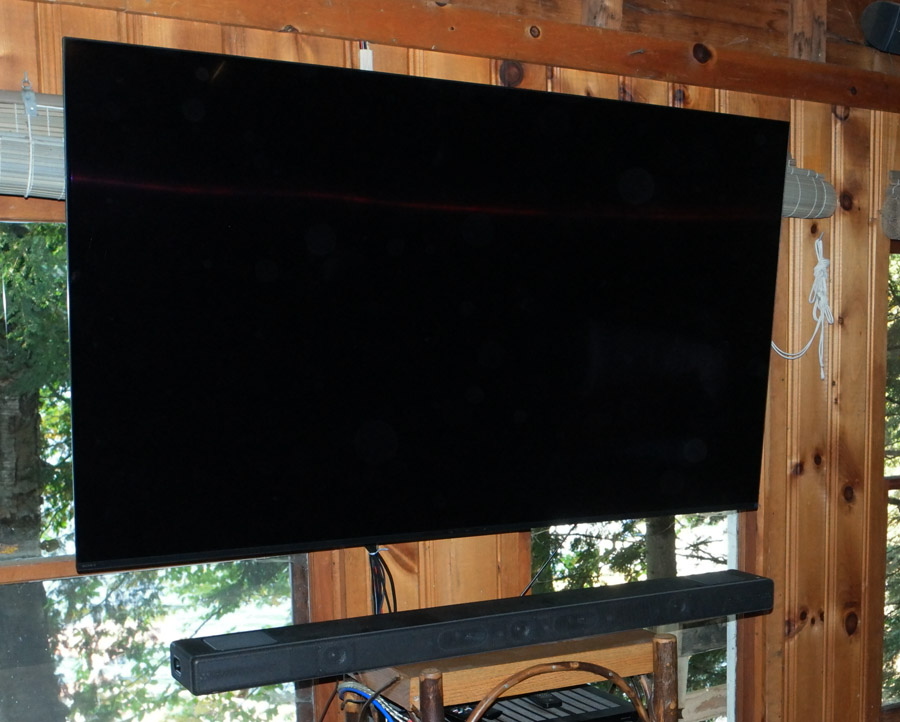
Sony’s HT-A5000 is the company’s latest soundbar-based system which offers optional rear speakers and an optional powered subwoofer to deliver true immersive surround sound. The soundbar can be used on its own and includes up-firing drivers to bounce height sound off your celing. But for best effect, you’ll definitely want to add one of the company’s two wireless subwoofers and a pair of their wireless surround speakers to the rear of your room. Both the subwoofer and the rear speakers connect wirelessly to the bar so you’ll be able to put them anywhere you like in the room. Keep in mind that these “wireless” speakers do need power, so you’ll want to make sure there’s an AC outlet nearby.
The Set-Up
The Sony HT-A5000 offers a pair of HDMI ports, one of which handles eARC (enhanced Audio Return Channel). With the bar connected to your TV’s eARC HDMI port, you can use your TV as the switching device if you have multiple sources like a gaming console, Blu-ray Player and streaming stick connected to your TV. This also allows you to use your TV’s built-in streaming platform for all your streaming needs and still get the sound from your soundbar. The additional HDMI input on the HT-A5000 is handy in case you have a high quality lossless audio source (like a 4K UltraHD Blu-ray Player) that you want to connect directly to the soundbar.

I did do a limited amount of listening to the HTS-A5000 soundbar on its own. It accepts a Dolby Atmos input signal and does its best to create a spacious soundfield from Dolby Atmos content. It did provide a reasonably open and spacious soundstage with sound coming from above (thanks to upmounted drivers) and even from out to the sides. It certainly improved upon the sound of the built-in speakers in the Sony A80L OLED TV I paired it with. But the bass response was fairly limited and there was no real sense of surround sound coming from behind the listening position, so I continuted on with the set-up to add the surround speakers and subwoofer.
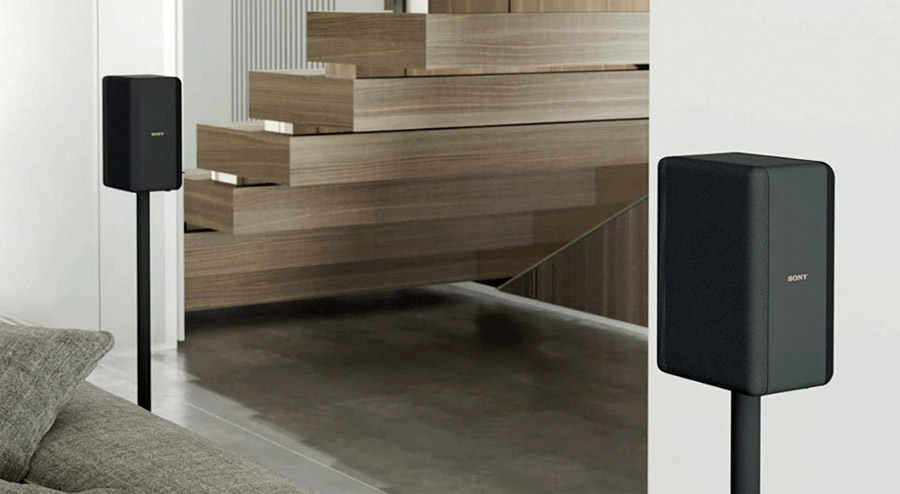
Pairing the surround speakers and powered subwoofer to the Sony soundbar was pretty straightforward. Just plug in the speakers to a power source and follow the on-screen instructions if they don’t automaticaly pair with the bar. A green light illuminates when the rear speakers and subwoofer have successfully paired with the main soundbar. For my review, I used a pair of RA-RS3S surround speakers ($349/pair) and Sony’s SA-SW3 powered subwoofer ($399). The HT-A5000 soundbar itself lists for $999. Total list price of the system is $1,747, but you should be able to find the system available at a lower price. An upgraded bundle with the larger SW5 subwoofer is available for about $200 more. During set-up, the Sony HT-A5000 performs a basic speaker calibration (“sound field optimization”) using test tones and the built-in microphone to measure distance and optimize speaker levels for your specific room.
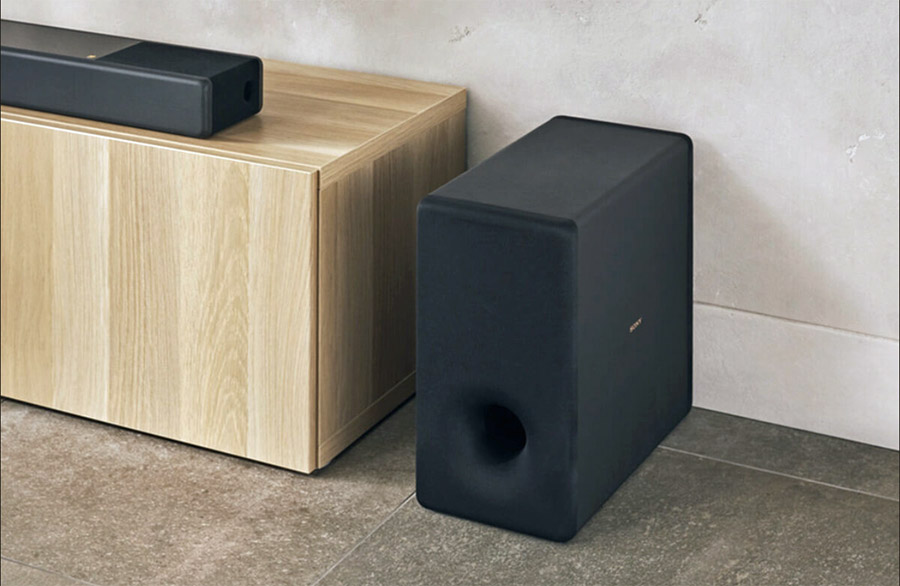
Sweet Immersion
To put the system through its paces, I hit it with a number of TV clips and full shows, movies and music tracks from multiple genres. “John Wick: Chapter 4″ doesn’t waste any time bringing on a deep throbbing bass as the main character slams his fist into a solid column of wood, repeatedly. With each blow, a deep bass note echoes through the room. On the Sony system, that bass was powerful and firm, but it didn’t extend as deeply as I’ve heard on component-based systems. Although the RS3 subwoofer’s cabinet is fairly large, the driver itself is only about 6.25” (160mm) in diameter. So there’s only so much air that can be moved. Fortunately, the system knows its limits so the bass energy that was reproduced was taut and firm, not boomy or sloppy. On the movie’s numerous fast-paced fight sequences, the sound was coherent and easy to follow with dynamics that complemented the on-screen visuals.
On “Dune,” when Paul Atreides first breathes the spice and begins to experience intense visions, sound permeated the room: music swelled, sands swirled and voices of the Bene Gesserit witches echoed through his mind, and through the listening room. The system was able to keep the separate sounds distinct within this sonic cacaphony. Dialog which followed later in the scene was easy to make out over the swell of the soundtrack. The bass of the worm’s attack had good impact but lacked depth at the low end. I watched (and listened to) “Dune” both on Ultra HD Blu-ray (lossless) and on Amazon Prime Video (lossy) and both Dolby Atmos mixes sounded full and detailed on the Sony system.

I like to use the intro scene from the first episode of “Andor” to gauge the immersiveness of a sound system. On the Sony system, rain fell from above, as it should, thanks to the Sony’s up-firing Dolby Atmos drivers. For this to work well, you do need flat reflective ceilings, not more than about 9 feet high so that the sound can bounce off the ceiling and back toward the main listening position. As the scene continued, dialog was clear and articulate over the background music in the club.
One feature unique to Sony’s higher end TVs is that you can use the TV’s own speaker as the center channel speaker with the HT-A5000 soundbar. This requires a compatible Sony TV (I used the A80L OLED) and an audio cable connected between the soundbar’s S-Center output and the TV’s S-Center input. You can then enable the TV center channel feature in the audio settings menu in the TV. This utilizes Sony’s “Acoustic Center Sync” feature to position all dialog and center channel information right on the screen itself.
I found that using the A80L OLED as the center channel enhanced the realism of movies and TV programs by locking voices on screen. This improved the sound both for dialog intelligibility and for soundstage height and positioning. I didn’t enjoy the sound quite as much with immersive music listening as I did for movies and TV however. Using the TV’s center channel for music gave the sound a front/center-heavy mix on music that I did not find as natural. But individual users can experiment with this and select the mode that sounds best to them.
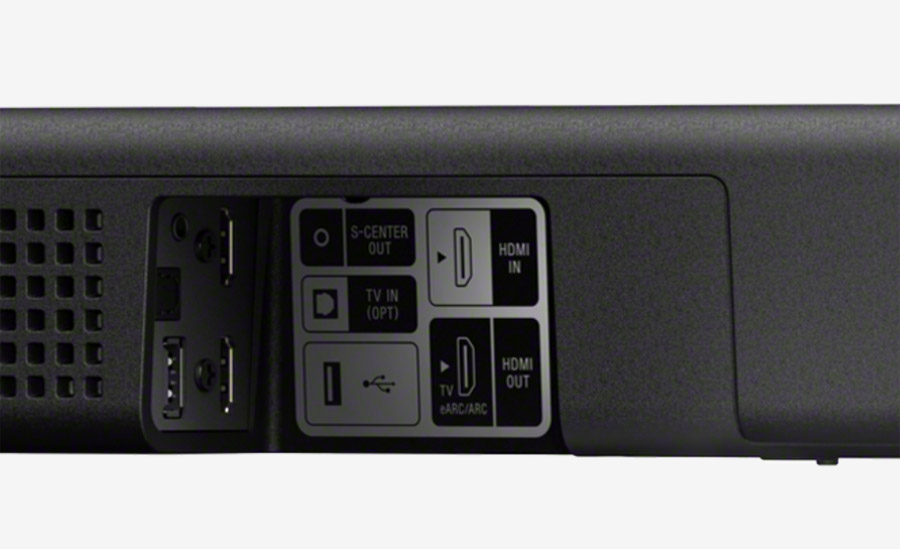
Music that Surrounds You
For music, I reverted back to using the soundbar, sub and rear speakers for listening (TV speaker disabled). Most of my music listening was of Dolby Atmos music tracks in TIDAL. The Atmos remix of Ed Sheeran’s “Shape of You” builds from a fairly simple two channel mix with subtle use of surrounds to eventually take over the entire listening space with elegant layering of instruments and vocal tracks that surround the listener. This was reproduced nicely on the HT-A5000 system with sound emanating from all around the room.
Similarly, the track “The 30th” by Billie Eilish sounds powerful in Dolby Atmos. The song starts with simple voice and guitar but builds in the bridge to a multi-dimensional intensity with keyboard accompaniment, harmony vocals and percussion layering into a dramatic crescendo which then collapses abruptly as the singer brings home the intimate closing lines. Taylor Swift’s “All of the Girls You’ve Loved Before” features more subtle but effective use of surround sound to bring the listener right inside the mix. These fairly simple but layered arrangements worked well through the Sony system.
Moving onto heavier stuff, I hit the system with a selection of tracks by EDM artist and producer Deadmau5 from his recent collaboration with with KX5 and Kaskade. If you want to give your home theater system a bass workout, put on some Deadmau5, specifically the track “Alive” mixed and mastered in Dolby Atmos. This brings a powerful bassline and layered synths travelling in multiple directions which will invade and permeate your entire room. “Escape” features a mellower but equally powerful groove. And “Bright Lights” is a toe-tapping EDM ditty that will get your juices flowing. The Sony HT-A5000-based system did a good job reproducing the immersiveness of the EDM material and presenting the various layers. As with movie material, the bass was solid but just not particularly deep. The more I listened to the system, the more I thought it would probably have benefited from the company’s larger SW5 subwoofer instead of the smaller SW3, particularly for those who like to go deep.
Moving on from Dolby Atmos, I also queued up some tracks in Sony’s own immersive format, 360 Reality Audio (360RA). While services like TIDAL, Apple Music and Amazon Music can deliver Dolby Atmos music from an app on a TV or streaming stick, 360RA is delivered differently. To listen to 360RA tracks on the Sony soundbar, you need to run the music app (again, Tidal or Amazon Music) on your phone and then connect the app on your phone to the soundbar using Chromecast Direct. Be sure to set up and enable Chromecast Direct in the HT-A5000’s set-up menu if you want to take advantage of 360RA tracks.
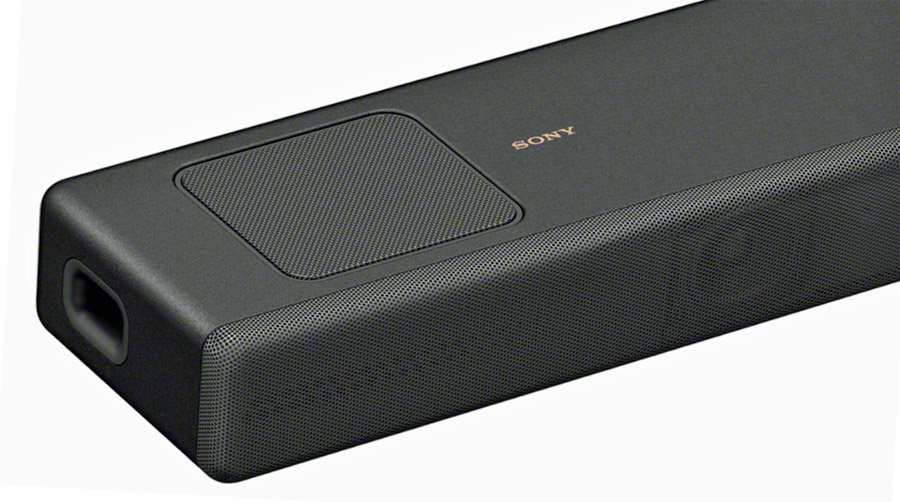
In 360RA, I listened to newer tracks by Pink, Dua Lipa and Ellie Goulding with Calvin Harris. I also found a selection of 360RA remixes available of classic tracks from Daft Punk, Billy Joel, Celine Dion and Whitney Houston (among others). Similar to Dolby Atmos, Sony 360 Reality Audio can bring the listener into the music more effectively than standard stereo mixes. It makes music listening more engaging, less passive. The selection of tracks in 360RA doesn’t yet approach what you can listen to in Dolby Atmos, but I’m happy to see some competition for Dolby Atmos out there.
Big Sound Becomes Bigger Sound
In addition to straight decoding of Dolby Atmos, DTS:X and 360RA, the HT-A5000 includes some of its own secret sauce for audio processing. Sony’s “360 Spatial Sound Mapping” (360SSM) is on-board and is enabled by default. This Sony technology attempts to map surround sound material into a more cohesive dome of sound. It generates “phantom” speaker channels between the speakers that you actually have in order to create a more seamless soundscape. To experiment with 360SSM on and off, just hit the “Soundfield” button on the remote control. The immediate difference I heard was that the sound was significantly louder with 360SSM engaged; like several decibels louder. This made it difficult to compare the processed sound to the unprocessed sound as ears tend to prefer louder sounds.
Overall, I left the 360SSM processing on for most material as it delivered a more expansive soundstage with better front-to-back and left-to-right integration. This was particularly effective for movies and high production value episodic TV shows encoded in Dolby Atmos.
Pros:
- Simple set-up
- Pleasing aesthetics
- No speaker wires required
Cons:
- Limited bass response even with SW3 subwoofer
- Up-firing speakers require low/flat ceilings for best effect
- Relatively expensive
The Bottom Line
While you can get better sound and greater flexibility from a component-based system (A/V receiver and separate speakers) at a similar price point, there is something to be said for the simplicity of a soundbar-based surround sound system. If you’re interested in raising the bar on your TV sound, but aren’t ready to invest in a component-based surround sound system, the Sony HT-A5000 provides a nice sonic upgrade to any TV. Pairing it with a Sony TV is ideal as this allows for simplified set-up, single remote operation (mostly) and the option to integrate your TV’s speakers as the system’s center channel speaker. If you can afford to add a pair of the company’s RS3 or RS5 surround speakers and either the SW3 or SW5 subwoofer, you’ll have a great sounding system that will provide a nice sonic upgrade without dominating your living room.
Where to Buy:
> Sony HT-A5000 Soundbar Bundle with RS3S Rear Speakers and SW3 Subwoofer (Amazon)
> Sony HT-A5000 Bundle with RS3S Rear Speakers and Upgraded SW5 Subwoofer (Amazon)
Related Reading:
Yes You Can Get a Dolby Atmos Surround Sound System for Under $1000

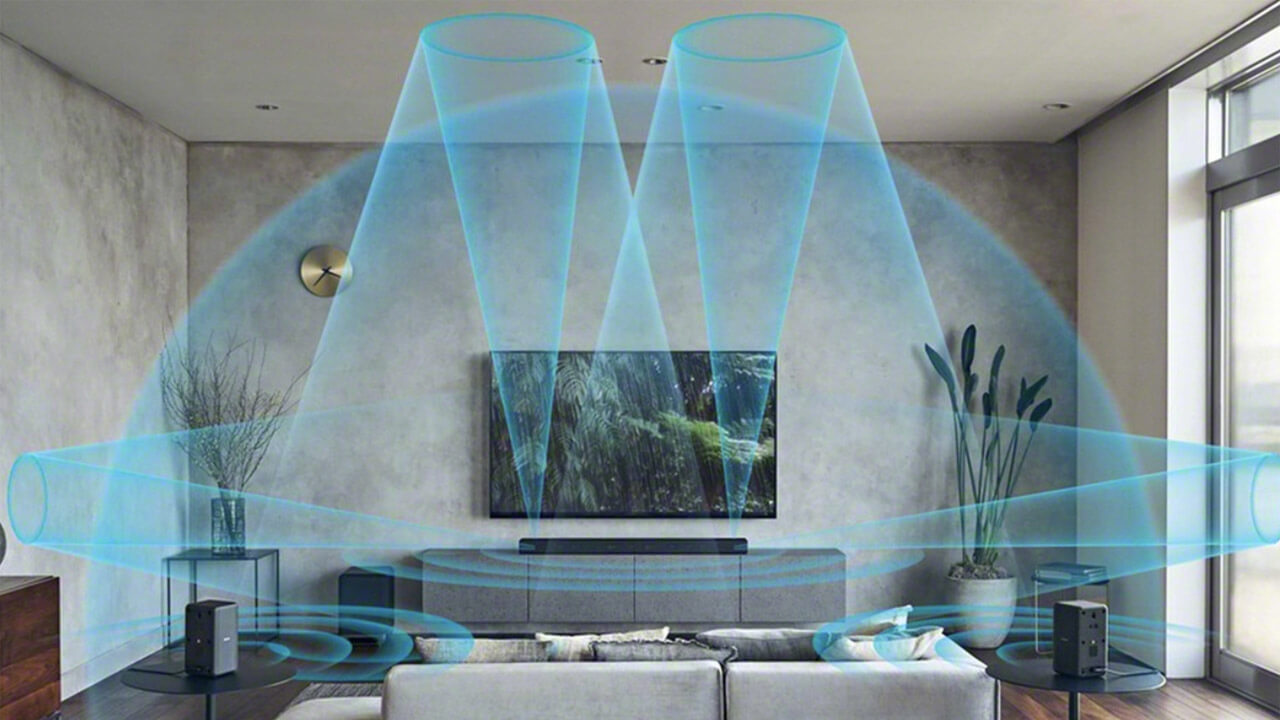
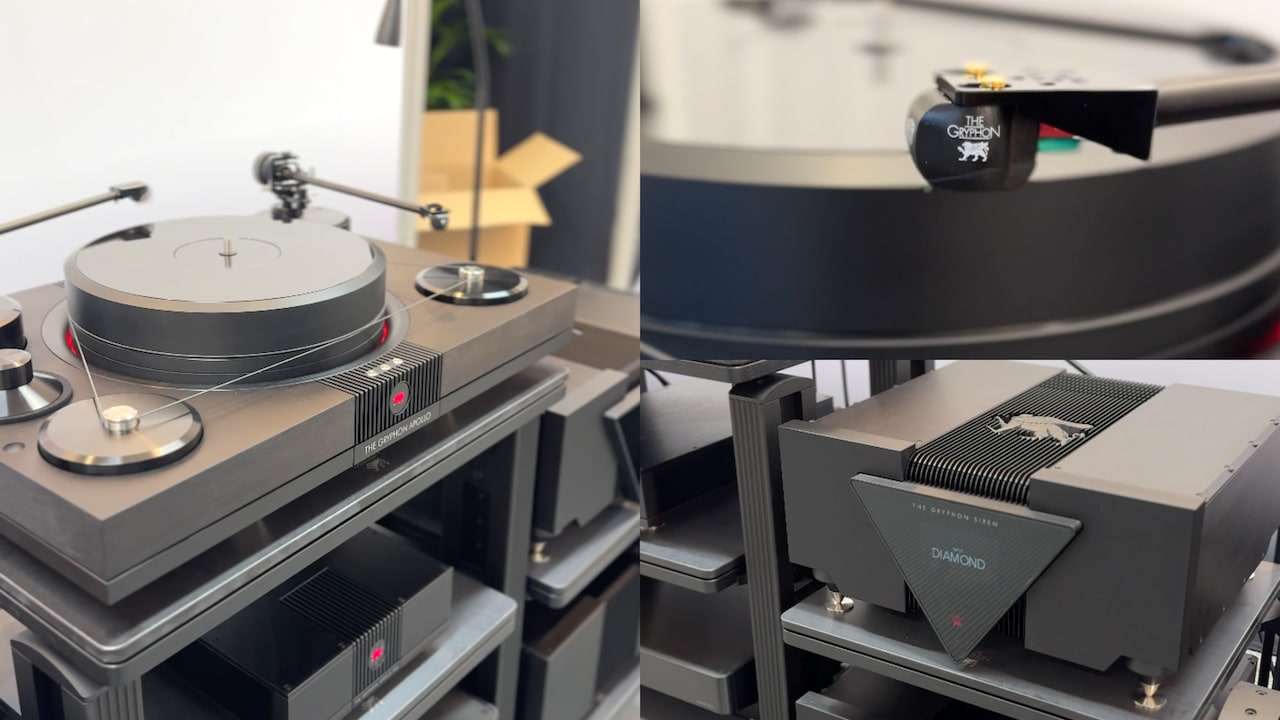
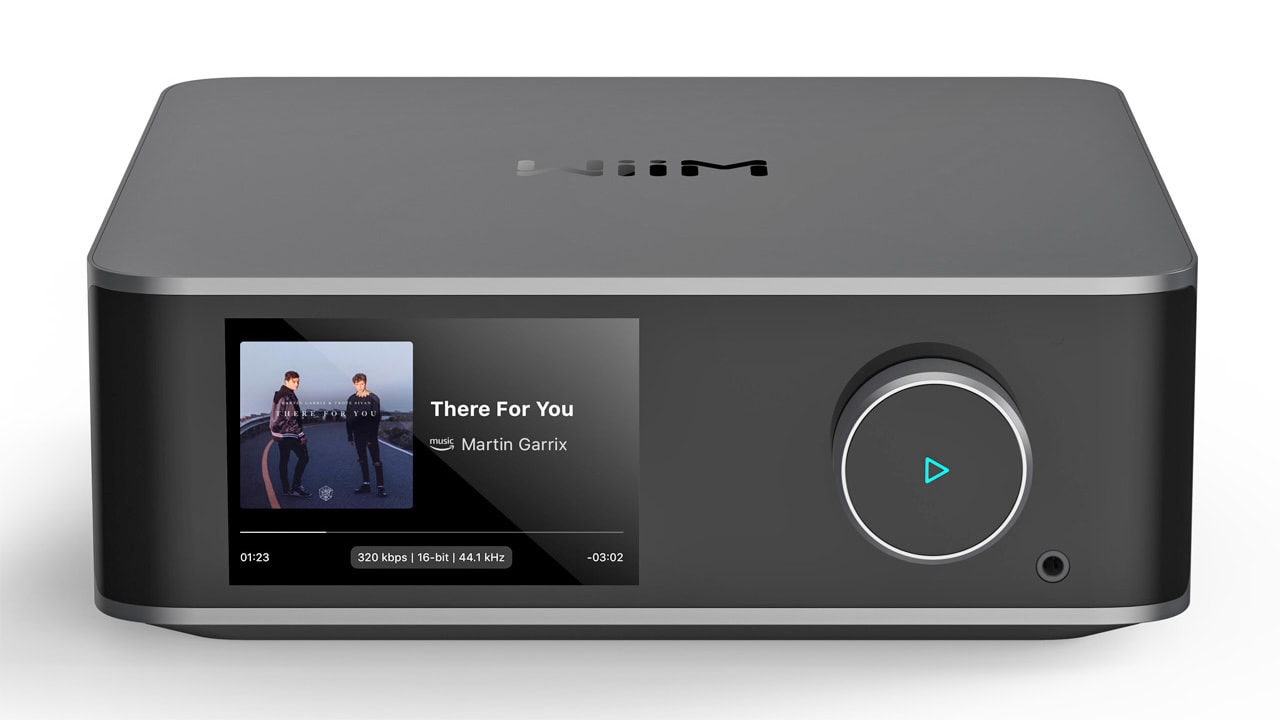
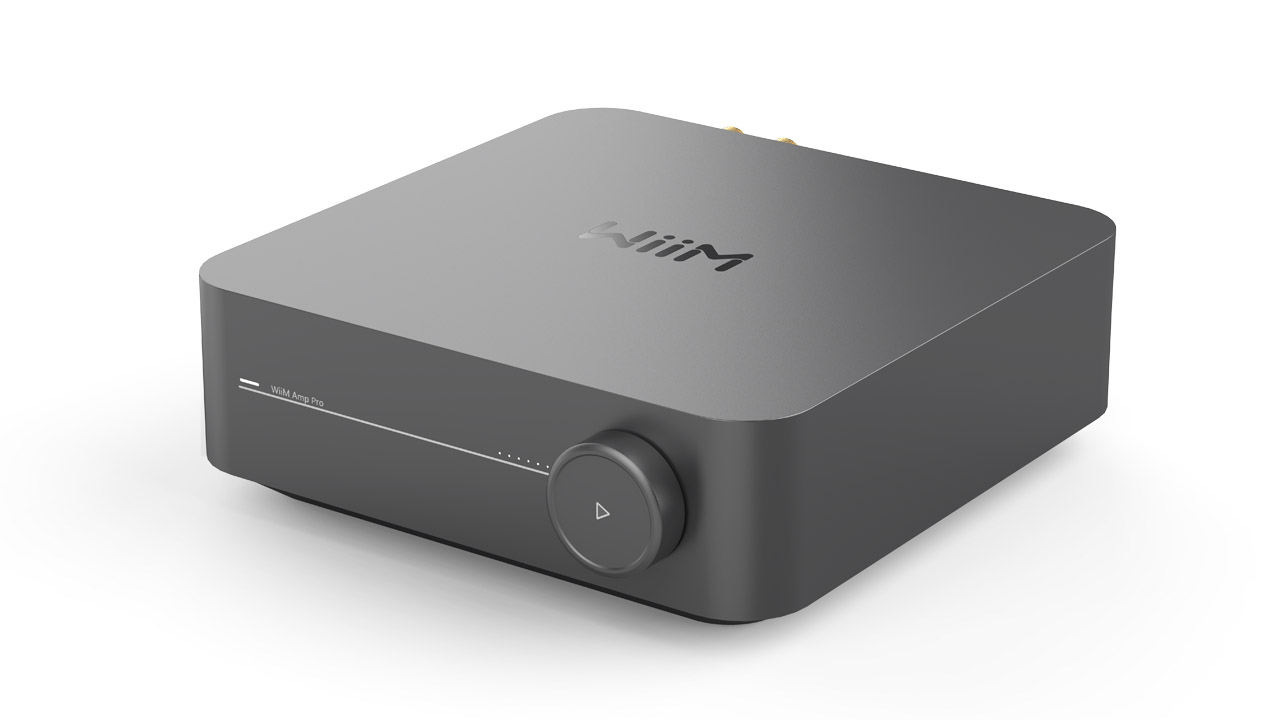
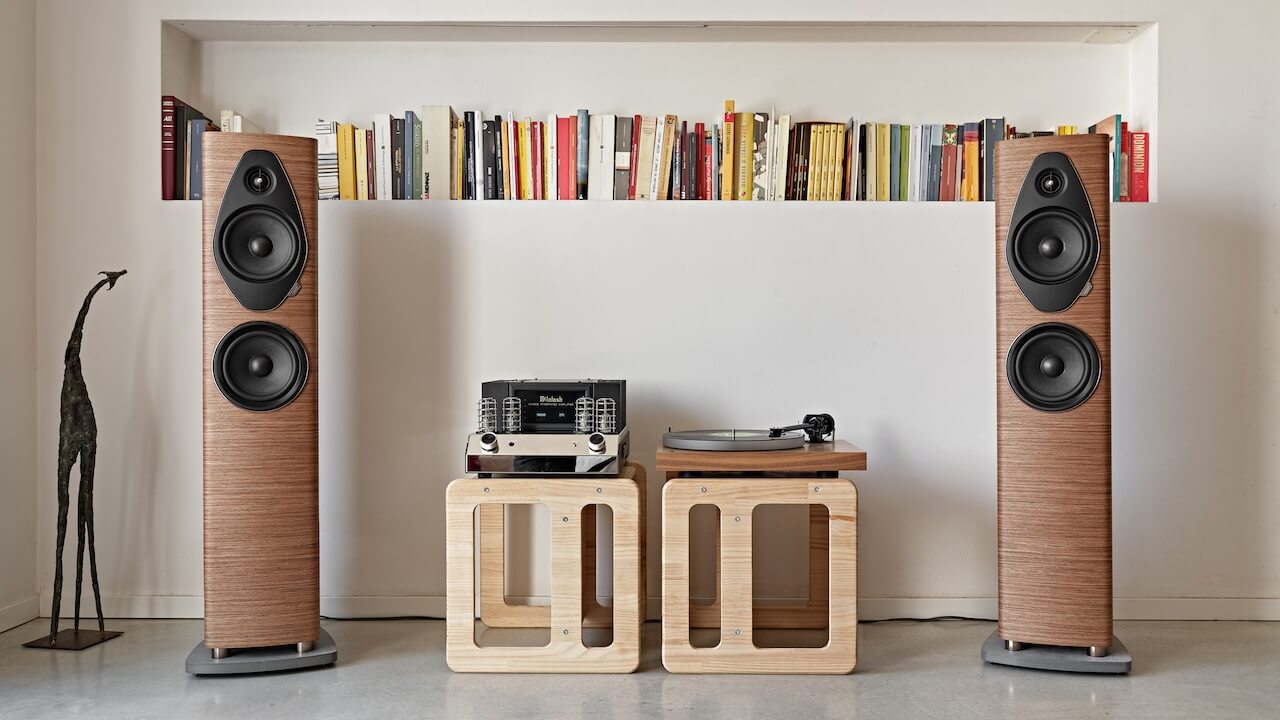

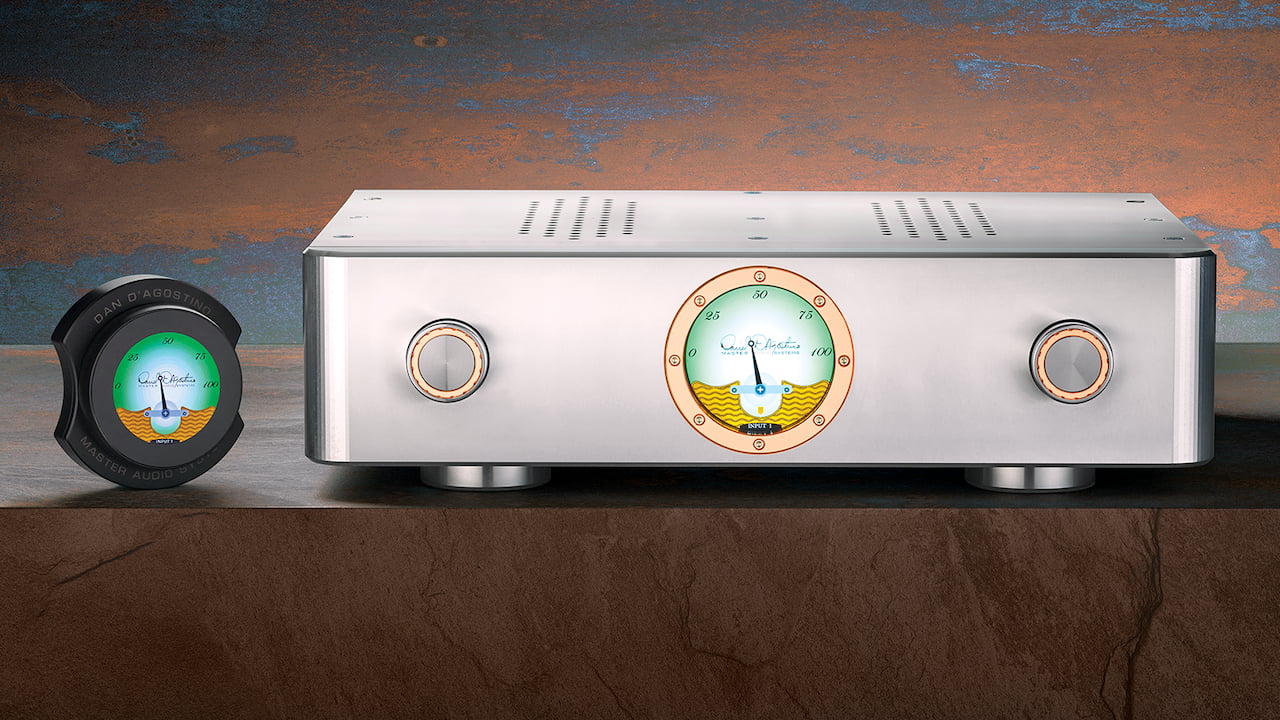



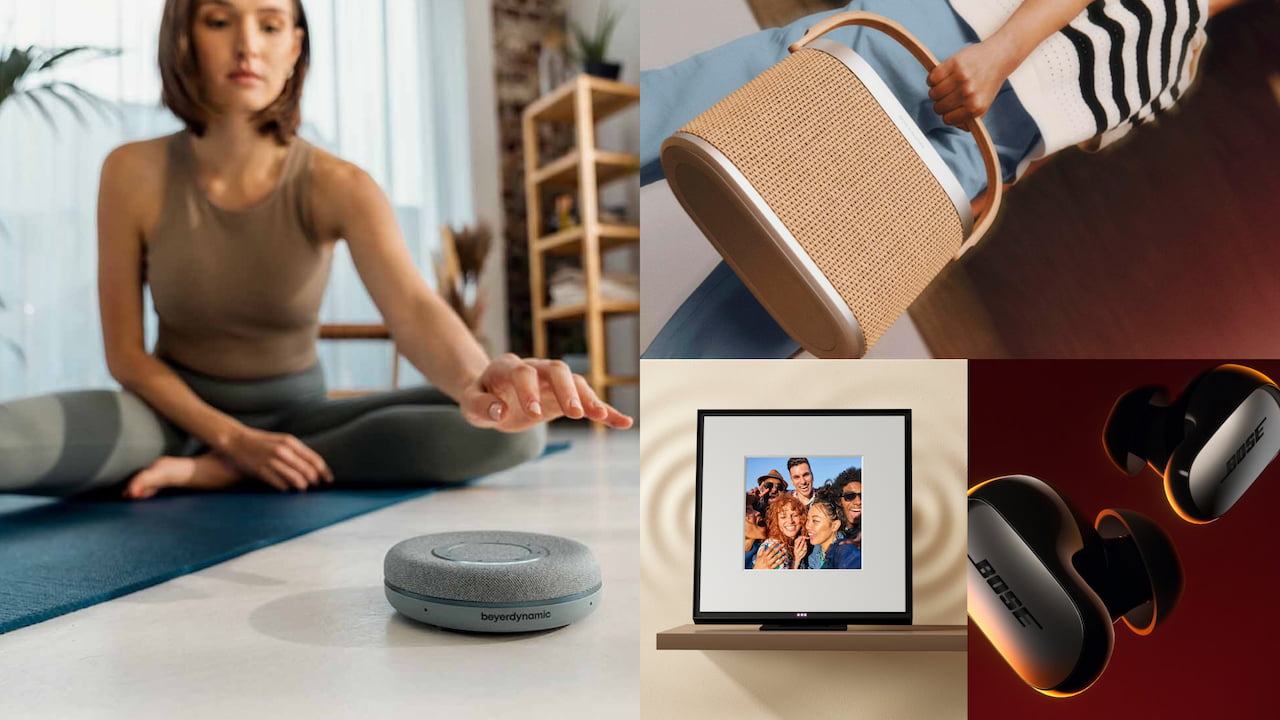
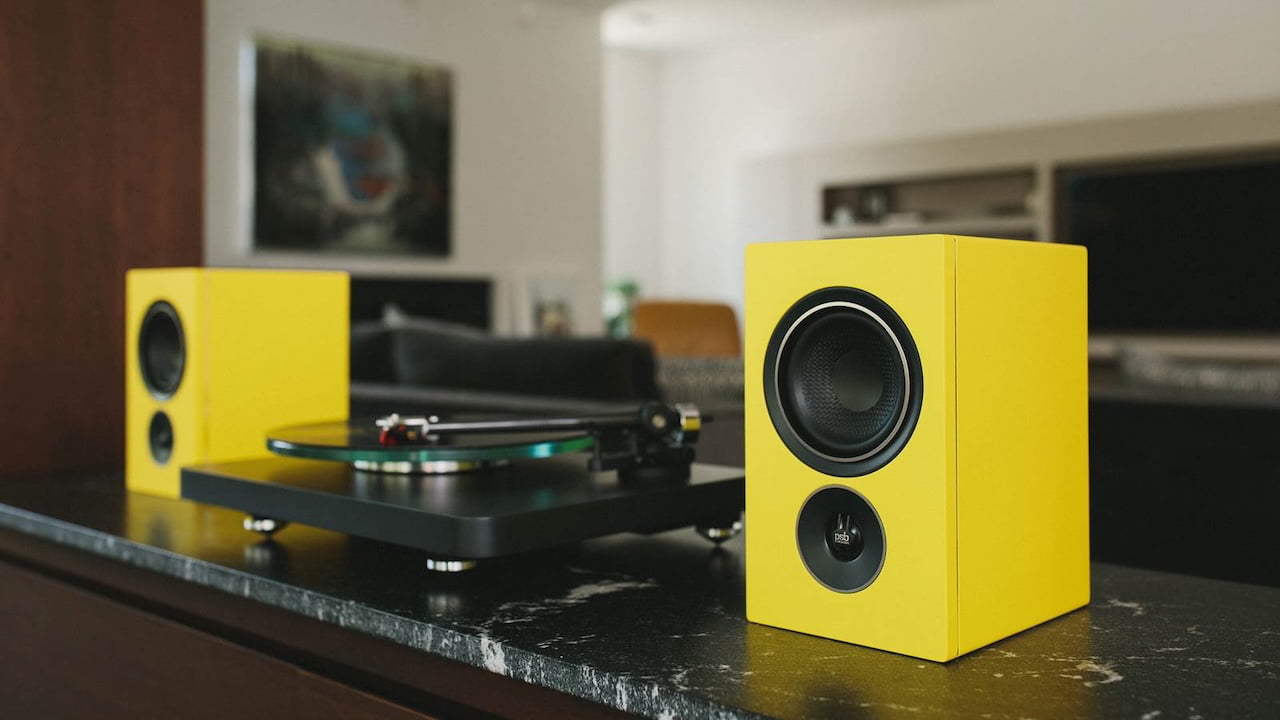
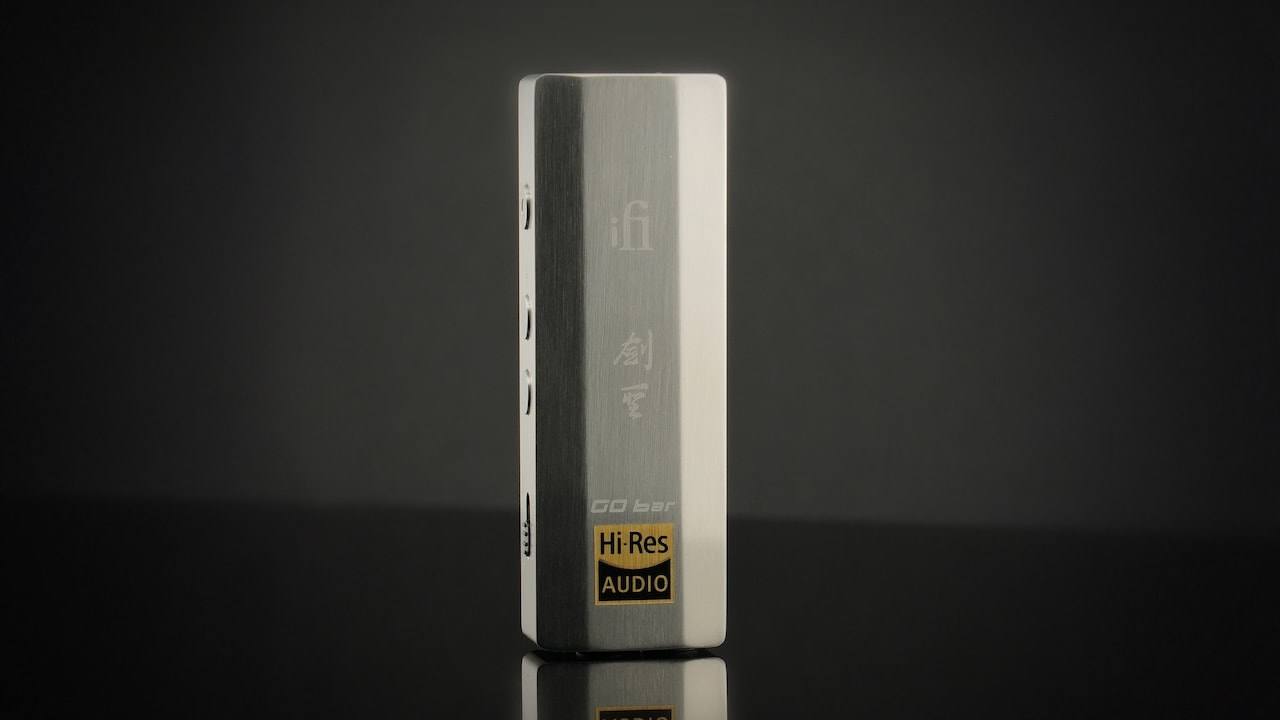
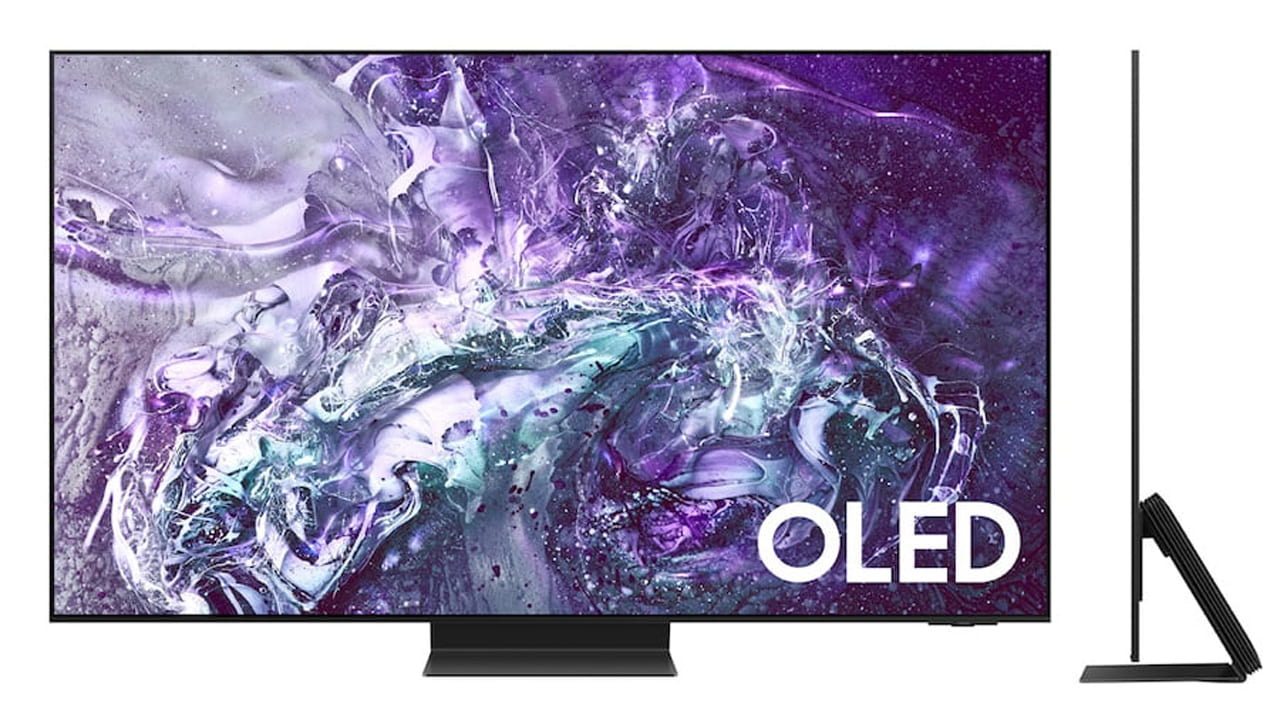
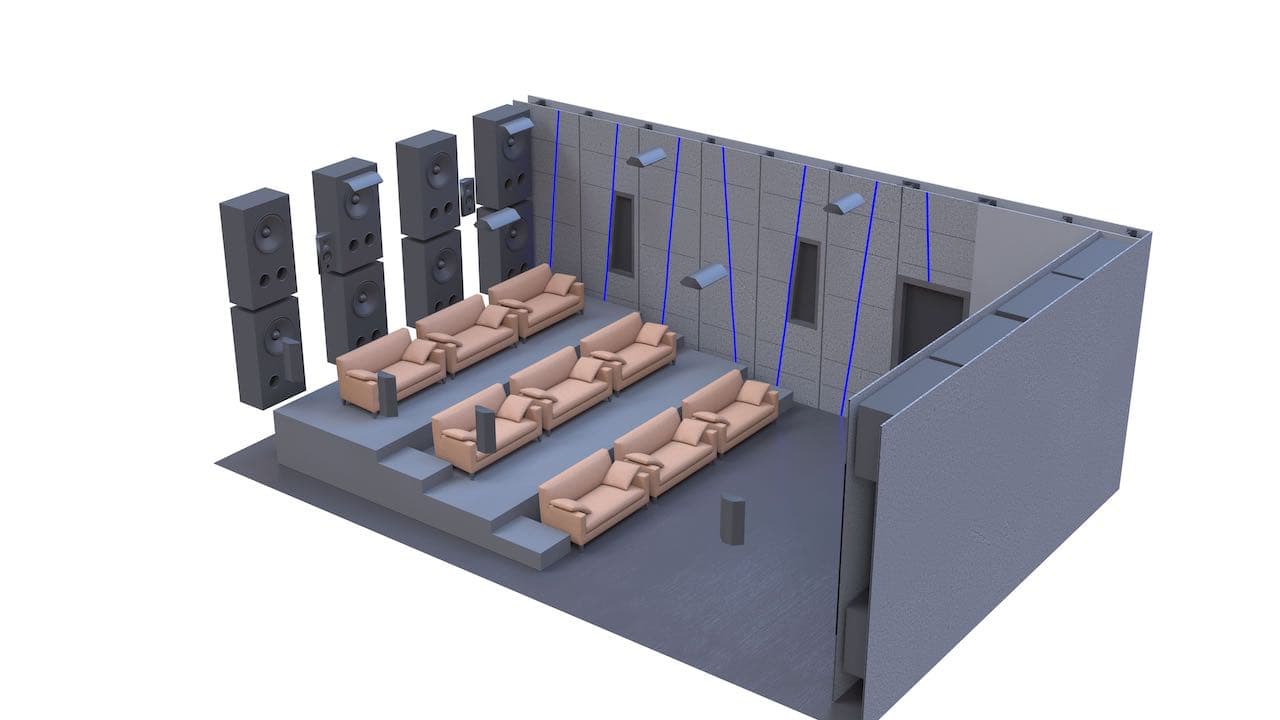
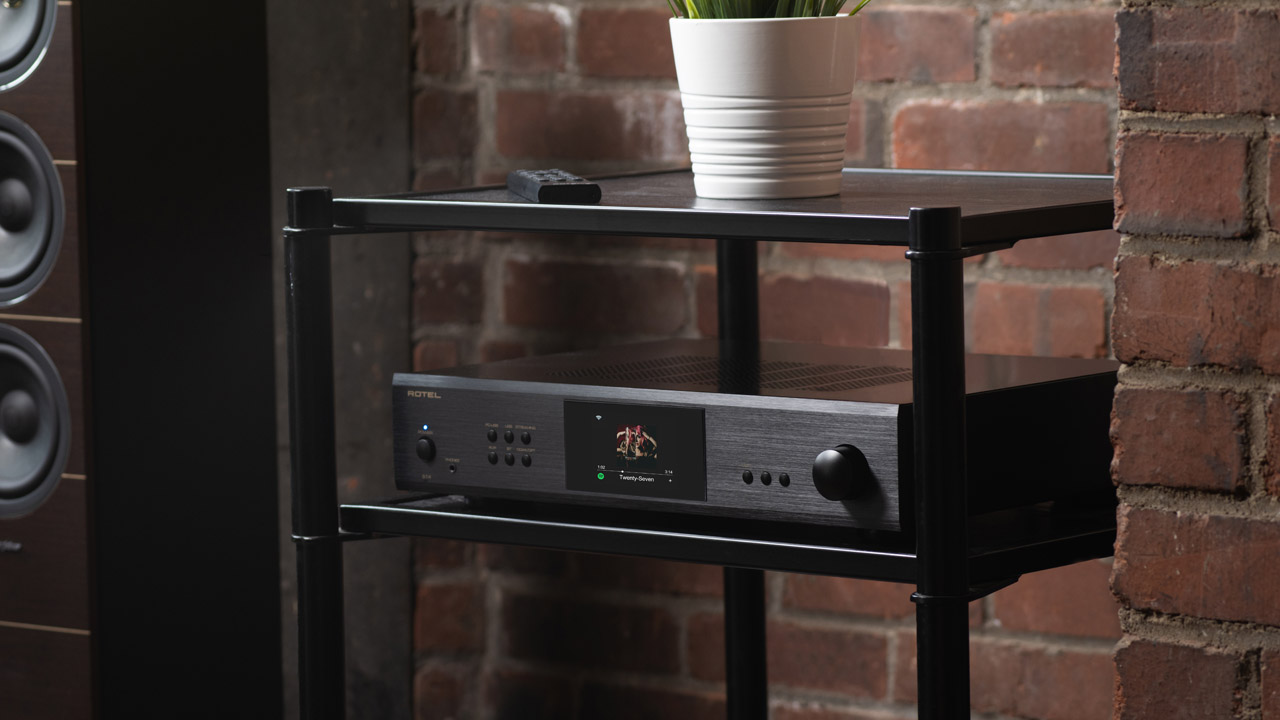
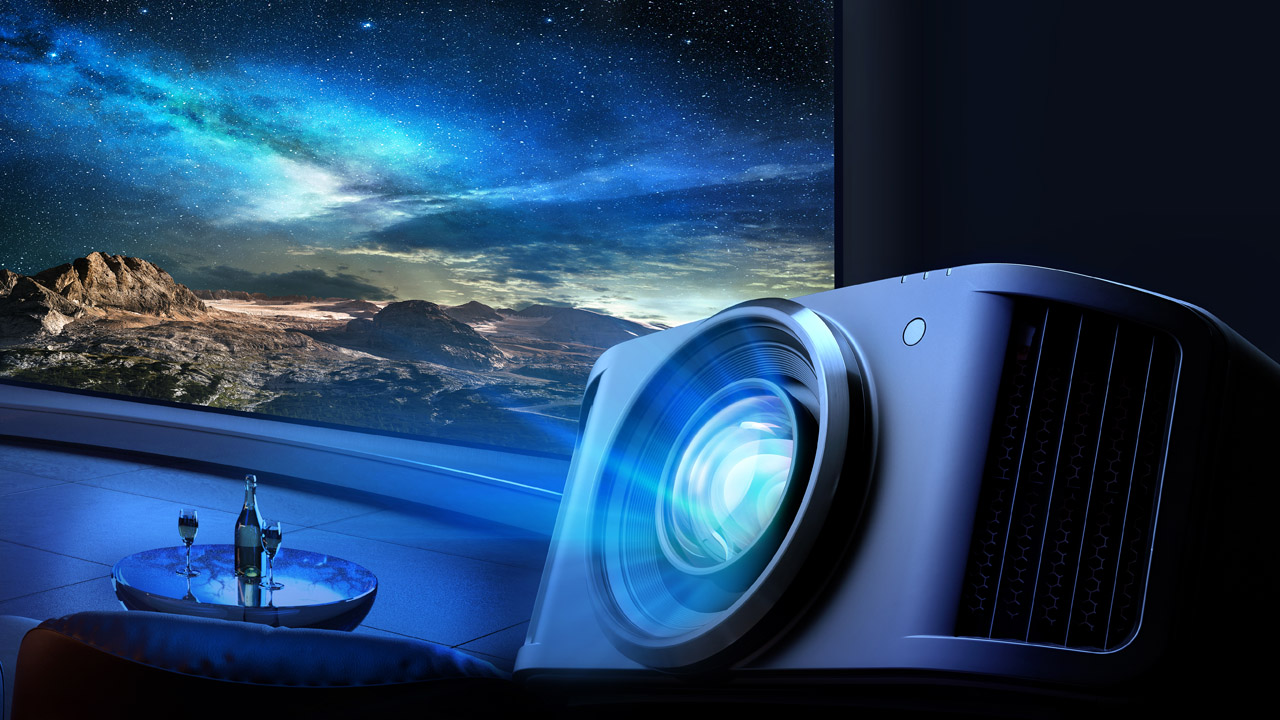
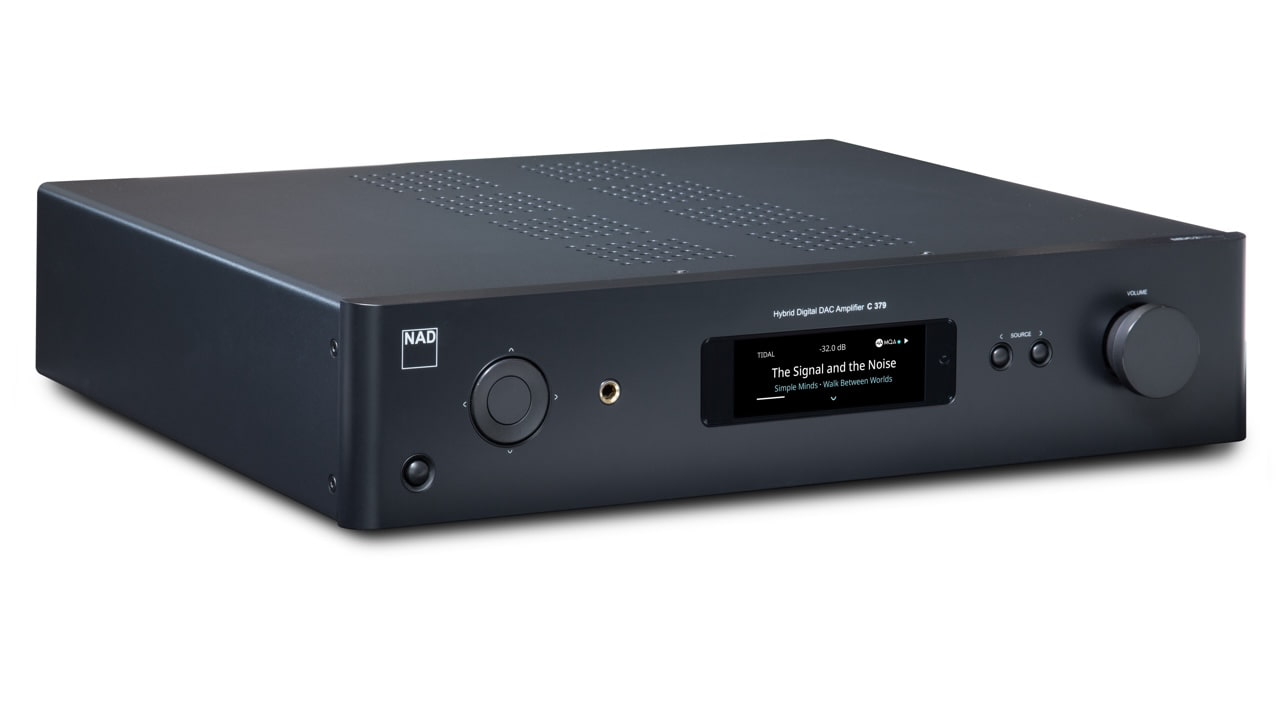
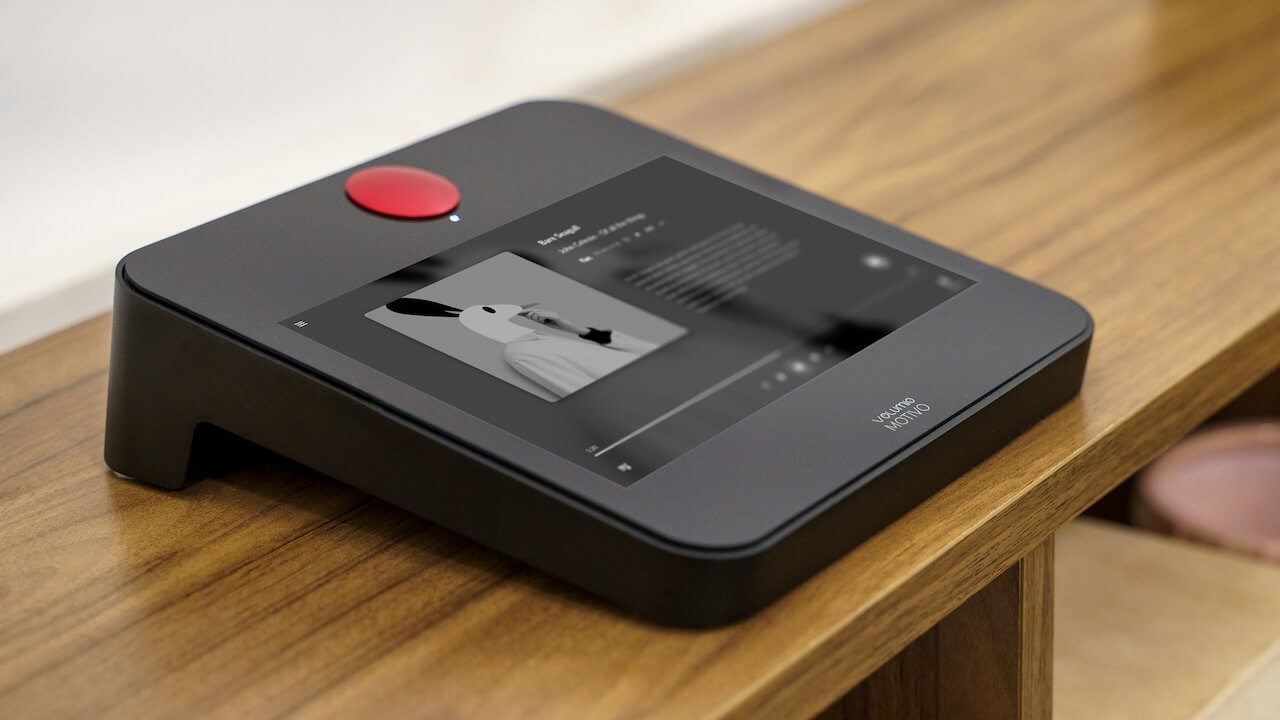
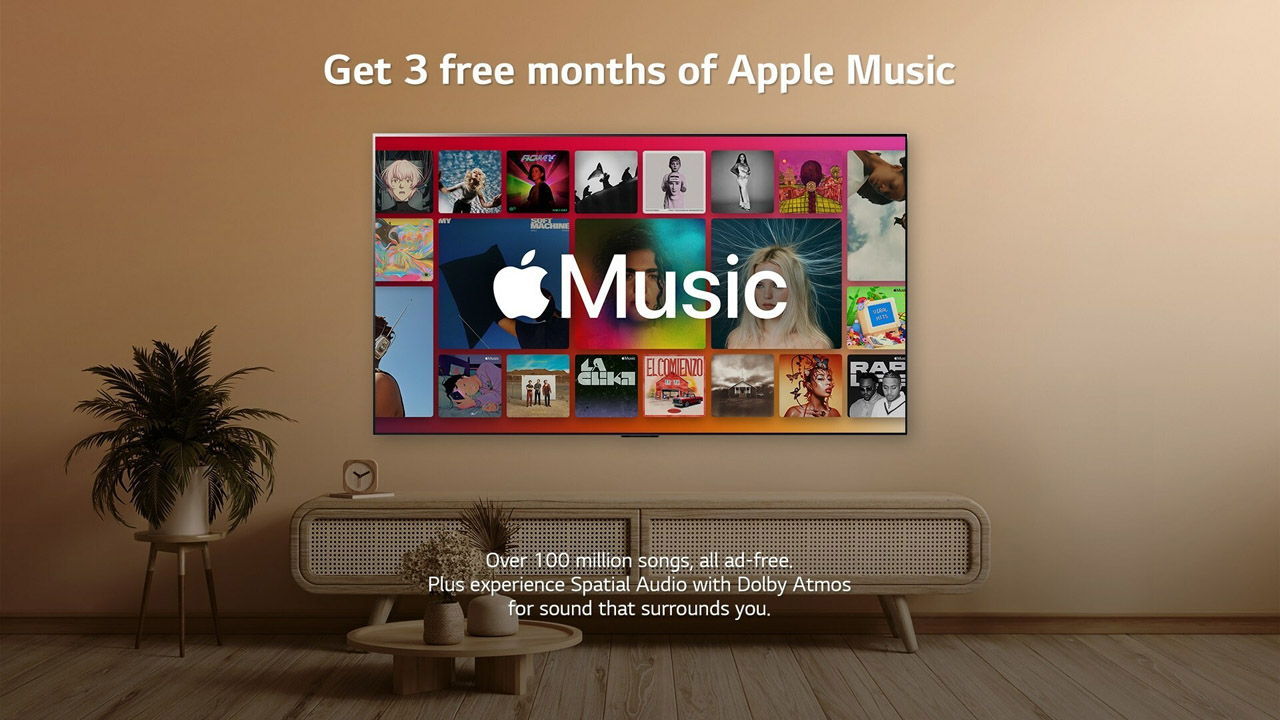











Tom
January 3, 2024 at 1:14 am
What was your room dimensions including distance from tv to viewing location?
Chris Boylan
January 28, 2024 at 11:31 pm
I used the system in a cabin with a great room that measures about 20 feet by 15 feet with fairly high ceilings (15 feet). I’m sure height effects would have been better with lower ceilings since the height speakers reflect off the ceiling. Distance to the TV from the couch was about 8 feet and distance from the couch to the rear wall where the surround speakers were mounted was about 6 feet.
The initial set-up procedure includes a basic speaker calibration using test tones and the built-in mic to optimize speaker levels for the room.
John Nelson
January 9, 2024 at 1:55 pm
So, how do these rear wireless speakers “magically “ pair to the system? You do explain. Please do not tell me they use Bluetooth as this technology “squashes” the sound that engineers work so hard to recreate.
Chris Boylan
January 28, 2024 at 11:49 pm
Sony uses RF in the 5.15-5.35 GHz band to pair the soundbar to the subwoofer and the rear speakers. The only Bluetooth involved is if you choose to use a Bluetooth source (like a phone) to play music on the soundbar.